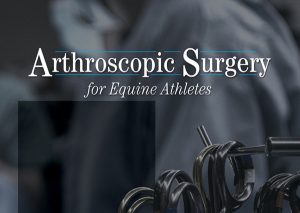Arthroscopic Surgery for Equine Athletes
Click here to read the complete article
Arthroscopy, also called arthroscopic surgery, is a common procedure used in the diagnosis and treatment of problems inside a joint. The word arthroscopy comes from two Greek words: arthro, meaning joint, and scope, meaning look. Arthroscopic surgery is a way to take a look inside a joint. This is a minimally invasive surgical procedure in which examination and treatment of damage is performed using an arthroscope—an endoscope that is inserted into the joint through a small incision.
Ryan Carpenter, DVM (Equine Medical Center, Cypress, California) says there are several reasons why equine veterinarians do arthroscopic surgery. Most common would be to obtain more information about a joint problem or to resolve the problem. “Perhaps an abnormality shows up on a radiograph, like a chip in a joint. We can go in there arthroscopically and remove that chip,” he says.
“Over the years as this technique was perfected, success rates have proven to be very good; the outcomes are very good. Generally the convalescent time for the horse is less than what it was in the past with traditional joint surgery,” says Carpenter.
Gary Baxter, VMD, MS (Hospital Director at University of Georgia in Athens, Georgia) says that arthroscopic surgery is considered a reliable diagnostic and treatment tool by most equine surgeons. This has become a mainstay for treating knees and ankles in racehorses and stifle problems in western performance horses, and for the occasional joint problem in other disciplines. “Quarter Horse racehorses tend to have multiple fragments and multiple joints involved. This may be related to the fact that they race at high speeds, which puts a great deal of force and concussion on those joints,” he explains.











